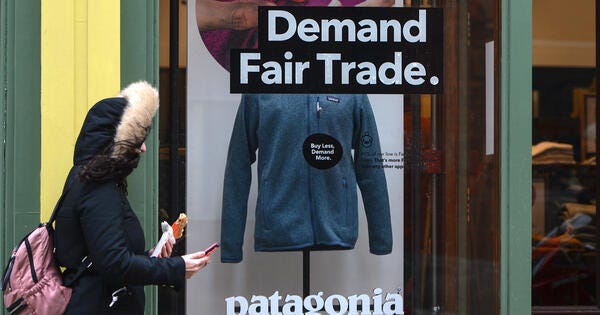Supply Chain Sustainability - Definition, Examples & Key Trends
From Apple and Adidas to Walmart and Whole Foods, companies around the world are actively taking steps to improve their supply chain sustainability. Important issues like forced labor in Xinjiang and worsening climate change continue to elevate the need for supply chain sustainability, traceability, and transparency in 2023 and beyond.
What is Supply Chain Sustainability?
Supply chain sustainability ensures that all the processes, activities, and steps involved in producing, transporting, and delivering goods and services within a supply chain are environmentally friendly, socially responsible, and safe
Supply chain sustainability considers the environmental impact of sourcing raw materials, manufacturing products, and transporting them to customers, as well as the impact on the communities where these activities take place. As a practice, it embeds environmental, social, and corporate governance considerations across supply chain procurement, sourcing, and logistics.
Additionally, supply chain sustainability involves making sure workers involved in a supply chain are treated fairly and have access to good working conditions. The overall goal of supply chain sustainability is to reduce the negative impact of business operations on the environment and society, while still meeting the needs of customers. There are both social (human rights) and environmental (carbon, water, waste, pollution) aspects to supply chain sustainability.
Three major difference between a traditional supply chain and sustainable supply chains are (1) efficiency, (2) proximity, and (3) circularity. Circularity means raw materials and/or products in a supply chain are renewed or re-used, rather than wasted. All other things equal, a circular supply chain is more sustainable than a linear, non-circular one.

Unlike a company's internal or operational sustainability initiatives, supply chain sustainability requires a unique mix of analysis, collaboration, due diligence, and encouragement. When a major percentage of your business' environmental and social impacts reside in your supply chain, but those suppliers aren't employed by you directly, how can you incentivize and partner with them to achieve more overall sustainability across your value chain?
Why is Supply Chain Sustainability so Important? What are the Benefits?
Supply chain sustainability is important and beneficial to organizations (as well as communities, consumers, and the planet) for a number of reasons:
- Environmental benefits - More sustainable supply chains cause lower overall environmental impact and harm. By limiting fossil fuel usage, raw materials consumption, and waste, companies can reduce their overall carbon footprint, biodiversity impacts, and minimize the amount of natural resources they consume
- Social benefits - Sustainable supply chains are often more resilient, promote greater social equity and inclusion, support fair labor practices and local economic development, and reduce pollution - thereby improving public health and overall social well-being
- Financial benefits - More sustainable supply chains are often more efficient overall, which often translates to financial cost savings from reduced raw material usage, lower energy consumption, improved trasnportation fuel efficiency, or closed loop re-use or re-sale of byproducts. Moreover, being able to demonstrate supply chain sustainability to customers can often unlock new revenue streams and de-risk procurement opportunities (both B2B and B2C) for companies. While it's true that sustainable raw materials often cost more expensive than less sustainable materials (if you consider a raw material that was harvested sustainably from someone paid a fair wage vs. the same material extracted through forced or under-paid labor and environmentally harmful industrial processes), and this 'impact-shifting' can be a negative attribute of globalization, nonetheless, when costs and usage are fully accounted for, sustainability tends to offer the best long-term financial investment
- Brand and reputation benefits - Sustainable, transparent supply chains help improve a company's reputation by building trust with sustainability-minded customers and other stakeholders
- Reduced compliance and regulatory risk - From fast fashion to fossil fuels, unsustainable supply chains are increasingly at risk of fines and penalties, particularly in sustainability-conscious regions like the EU
Supply Chain Sustainability Data and Statistics
According to analysis by DHL, the global supply chain and logistics industry generates approximately 3.9 billion tons of CO2 emissions annually, which is about 8% of the world's total emissions. In fact, in their entirety, supply chains create more than half of all global carbon emissions. Supply chains really matter in terms of their environmental impacts.
Moreover, as international commerce increases and supply chains become more global and complex, it's estimated that carbon emissions from supply chains will exceed growth in emissions from all other transportation activities, including passenger transportation. And of course there are other water, waste, and pollution impacts too.
From a social perspective, supply chains also respresent millions of jobs (and workers) around the world. Supply chains determine people's economic livelihoods, the type of labor they perform, and how capital gets allocated to different countries, regions, and communities. Supply chains can be a source of economic opportunity and empowerment, or they can contain terrible human rights violations like forced labor, modern slavery, and child labor.
Supply chain sustainability is also an untapped environmental, economic, and social opportunity. Research suggests only 46% percent of companies audit their suppliers, while only 25% actively engage their suppliers on sustainability improvement.
Supply Chain Sustainability Examples and Case Studies
In 2023, many companies are in the process of implementing more sustainable practices into their supply chains. Common examples include Patagonia, which is known for using organic cotton, recycled materials, and fair wage supply chains to produce its clothing, and IKEA, which is actively investing in supply chain sustainability and circularity around the world.

Patagonia takes a holistic approach to sustainability in their supply chain. This includes implementing environmentally and socially responsible practices at every stage of production, from sourcing raw materials to final product delivery. Some specific actions they take include:
- Partnering with fair trade certified factories to ensure fair and safe working conditions for their workers
- Using organic and recycled materials in their products whenever possible, and avoiding harmful chemicals and dyes
- Engaging in closed-loop production processes, where waste is minimized and repurposed into new products
- Implementing eco-friendly transportation methods, such as reducing shipping distances and using sustainable modes of transportation
- Supporting the conservation of natural resources and ecosystems through partnerships with organizations and initiatives focused on environmental conservation
Similarly, IKEA has implemented several initiatives to make their supply chain sustainable. Some of these steps and actions include:
- Using renewable and recycled materials in their products. IKEA sources materials such as wood, cotton, and paper from sustainable sources, using recycled and upcycled materials whenever possible.
- Partnering with suppliers that share their sustainability goals. IKEA works with suppliers that have a commitment to sustainability and have implemented practices such as reducing waste and water usage.
- Investing in upstream and downstream renewable energy sources such as wind and solar power to reduce their supply chain carbon footprint
- Reducing transportation emissions by optimizing routes and using more fuel-efficient vehicles
- Offering sustainable product choices: IKEA offers a range of sustainable products, such as energy-efficient appliances and furniture made from sustainable materials

Making new furniture from discarded furniture and recycled materials. Source: IKEA
You also don't need to be a global brand like IKEA to implement and invest in supply chain sustainability, for example, Brazilian meal delivery startup LivUp recognized an opportunity to purchase surplus products from local farmers to provide healthy, affordable, and accessible food to low-income families in need. In the same supply chain cycle, LivUp's model provides farmers with additional income, reduces food waste, and helps improve access to healthy food - all of it implemented through a circular, highly efficient logistics model.
While LivUp employs a particularly thoughtful, circular business model, there are learnings and lessons that can be applied to any company:
- Think local
- Reduce, re-use, recycle
- Optimize logistics
- Ask how your business can contribute to positive social impact

Supply Chain Sustainability Best Practices
There are many steps and best practices a company can follow to improve the sustainability of its supply chain. Some of these include:
- Conducting a sustainability assessment of top suppliers to identify areas for improvement and set goals, baselines, and benchmarks for reducing environmental and social impacts
- Engaging with suppliers to understand their environmental and social practices and working with them to improve these practices
- Implementing more efficient transportation and logistics routes, systems, technologies, fuel types, and/or vehicles to reduce fuel consumption and emissions
- Using renewable materials and reducing the use of non-renewable resources in the supply chain
- Developing partnerships and collaborations with suppliers, other companies, trade organizations, industry groups, universities, and governments to share knowledge and expertise on sustainable supply chain practices
- Communicating openly and transparently with stakeholders about the company's supply chain sustainability efforts and progress
If necessary, it can be helpful to engage senior leadership in these efforts. Communications to suppliers, partners, and other stakeholders often carry more weight if it comes from the CEO or Head of Procurement. Power mapping, both internally, within a supply chain, and at the individual supplier level is important.
In our experience working with global suppliers on sustainability and ESG, the majority of suppliers genuinely want to support sustainability efforts, but are also under-resourced and often under-educated in these areas. Most suppliers are used to filling out sustainability surveys, but not necessarily engaging directly on sustainable sourcing plans or environmental efficiency projects.
it's important to find common ground with the supplier and communicate why sustainability is in their best interest for the long-term growth, health, and stability of their business.
From there:
- Communicate: Help suppliers understand your organization's supply chain sustainability goals, targets, and KPIs, why they matter for that supplier, and why it's good for the supplier's overall business and procurement relationship to collaborate on sustainability
- Establish measurement systems: Use sustainability software and other tools to audit and measure key supply chain sustainability metrics
- Establish policies: Make sure supply chain sustainability efforts are reinforced and underwritten by company policies and contracts
- Baseline: Gather initial snapshots of supply chain sustainability, risks, opportunities, and maturity using your assessment systems
- Rank and benchmark: Begin tiering, ranking, scorecarding, and prioritizing individual suppliers, action items, and trends compared to industry averages and standards
- Engage: Work directly and collaboratively with suppliers on improvement areas and opportunities
- Learn and Iterate: Continue to measure, learn, iterate, and improve supplier processes, KPIs, and targets over time
Supply Chain Sustainability in Perspective
While many supply chains - particularly global ones - can be quite large and complex, it helps to break things down and prioritize specific supplier relationships based on tiering, procurement volume, and strategic importance. We've seen organizations of all shapes and sizes (including some of the world's largest procurement organizations) increase their focus and investments in supply chain sustainability, traceability, and transparency in the past several years, and expect this trend to continue and broaden, influencing more upstream suppliers and partners to comply with better sustainability standards and labor practices.
Remember, this work is challenging, and most organizations are undertaking it right now. In a recent survey by The Sustainability Consortium, a non-profit dedicated to improving the sustainability of consumer products, less than 20% of the 1,700 respondents said they have a comprehensive view of their supply chains' sustainability performance. More than half reported being unable to determine top sustainability issues within their supply chain.
Despite these difficulties, in most industries, engaging suppliers on sustainability is one of the most material paths to reducing a company's own environmental and social footprint. Supply chains are the foundation of an organization's sustainability performance and GHG emissions inventory, and it can't be overlooked.
Decarbonizing a global supply chain is complex, and requires internal capacity, resources, investment, and, most of all, time. But, when done well, supply chain sustainability leadership boosts everything from local community benefit to your firm's brand, reputation, operating financials, and investor consideration.





